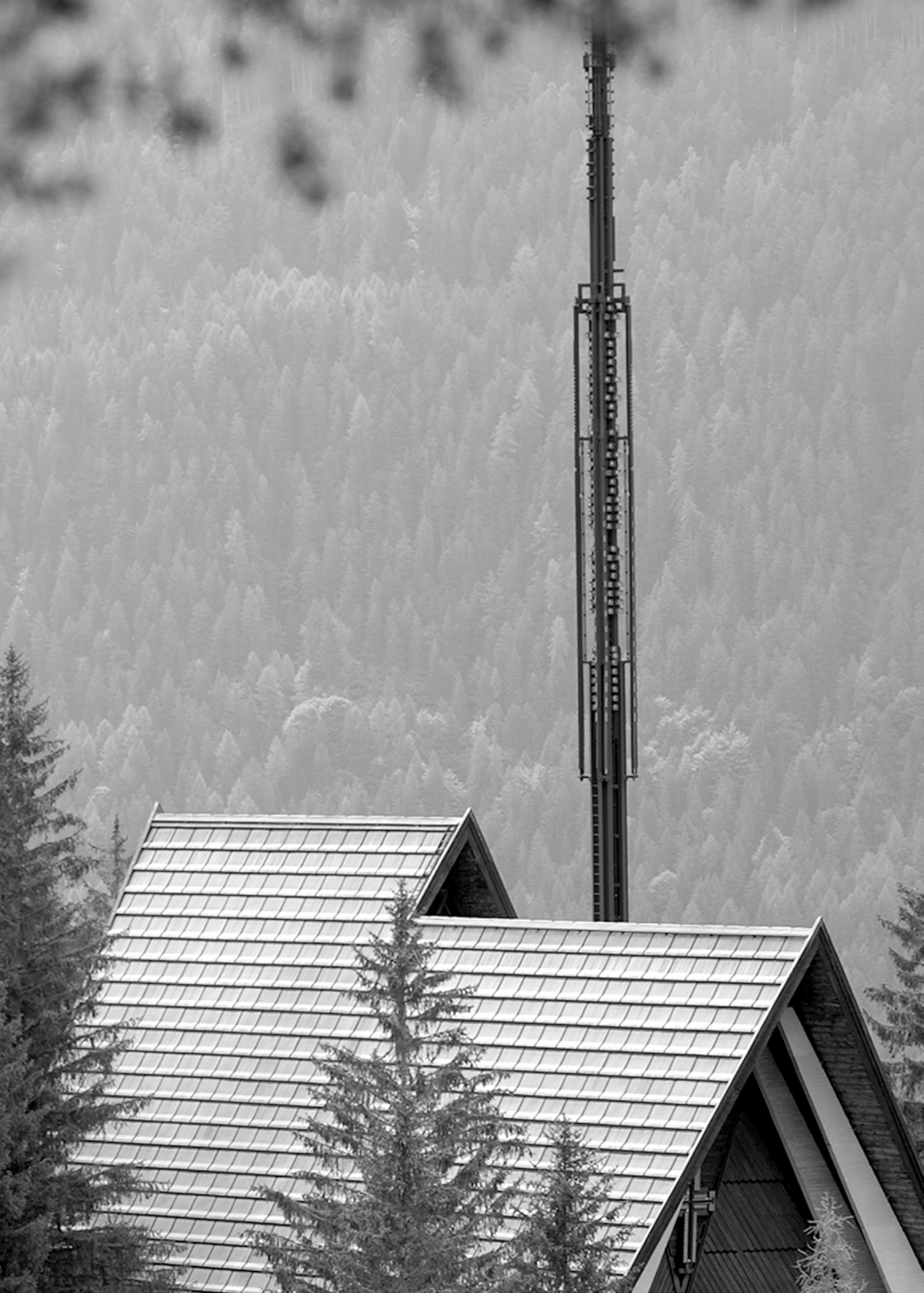
The Corte di Cadore Church, as explained by Edoardo Gellner in his Quasi un diario, played a significant role in the architectural and urban composition of the entire complex of Corte di Cadore. From the beginning, it was decided that it should constitute the dominant element of the entire village, close to the central hub and the collective facilities and services necessary for the smooth functioning of the entire complex. The strategic positioning of the church was carefully considered in terms of its relationship with the built environment and the surrounding vegetation.
Rather than being placed at the summit of the mountain, the church was thoughtfully positioned at a slight distance. This deliberate choice allowed the crest of the small hill and the lush vegetation of pines, junipers, and other underbrush, to seamlessly integrate as a complementary frame and background to the architecture of the church. The architecture described in this essay through the memories of one of the designers, Edoardo Gellner, is a testament to the collaborative brilliance of two architects, Gellner and Carlo Scarpa, whose collaboration contributed to the creation of architectural works rich in meaning and references.







